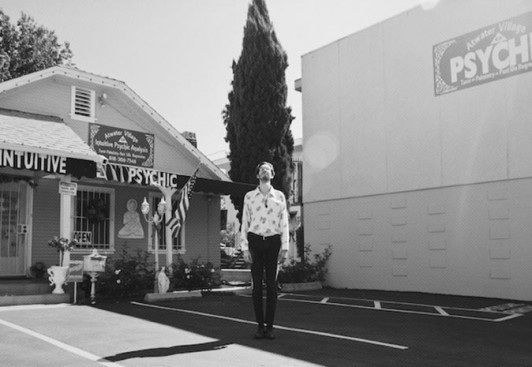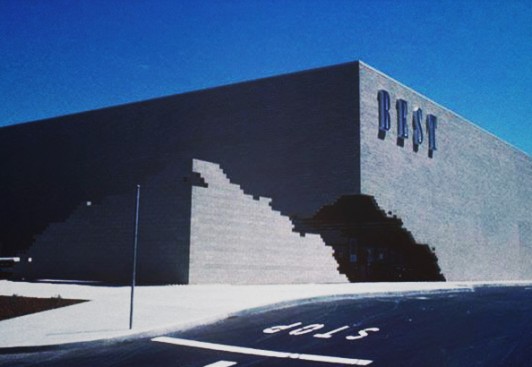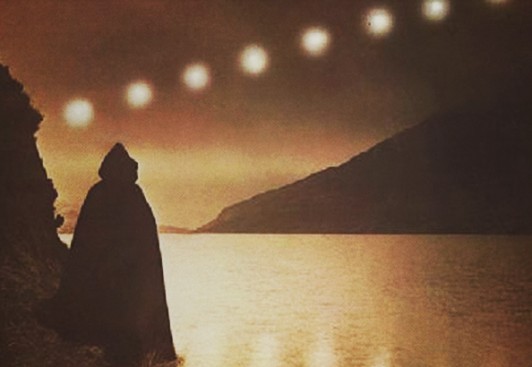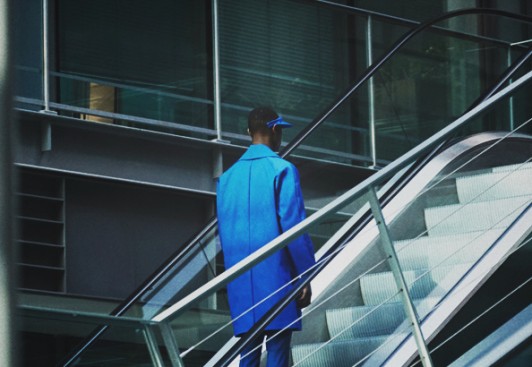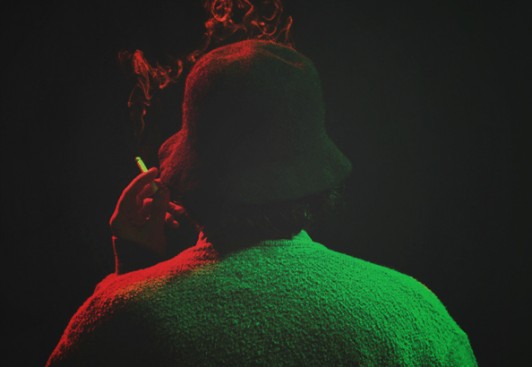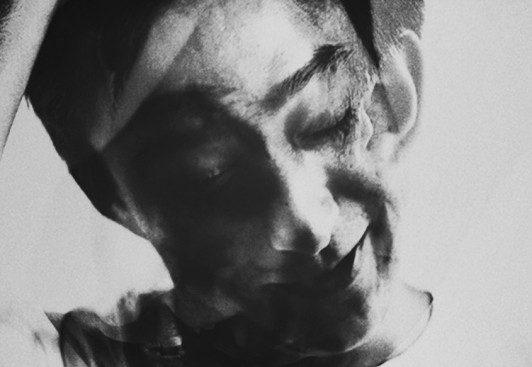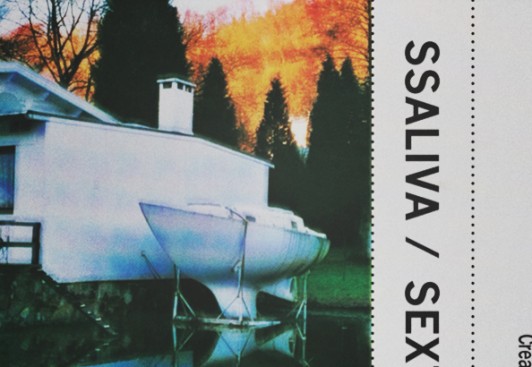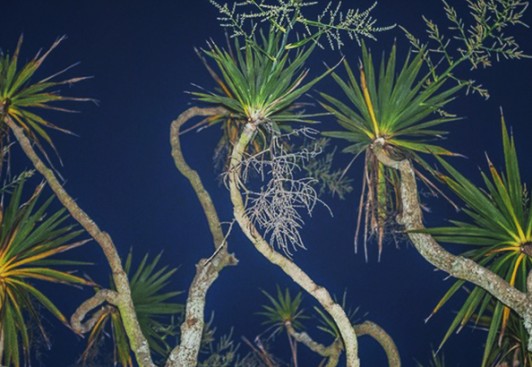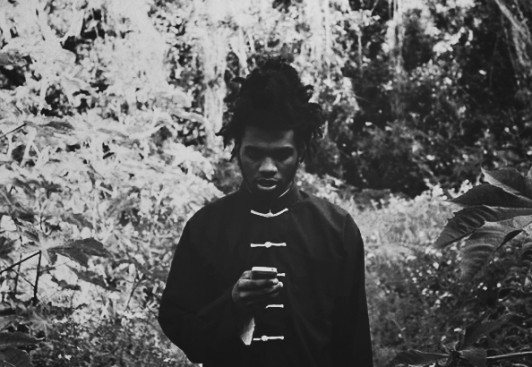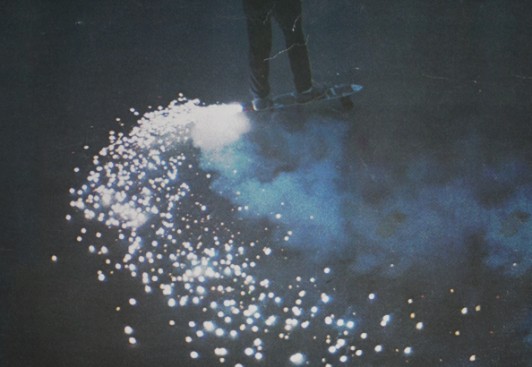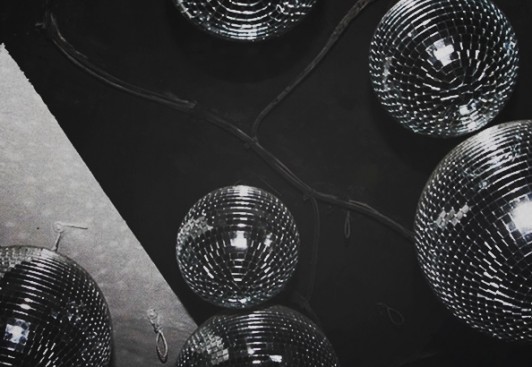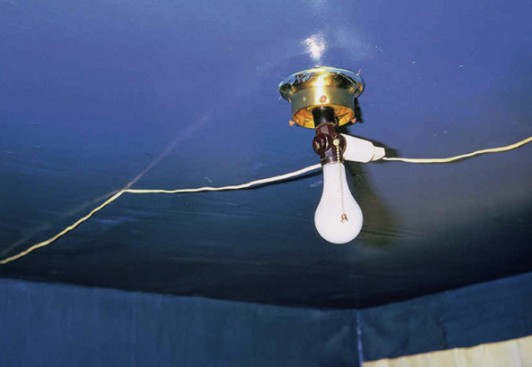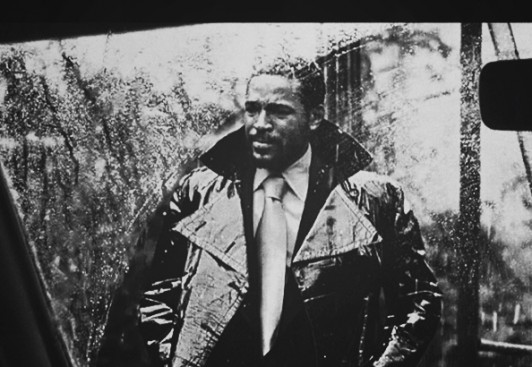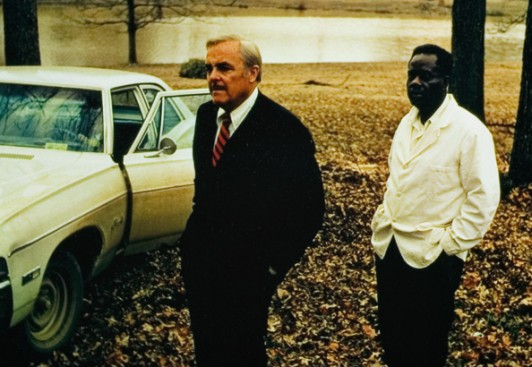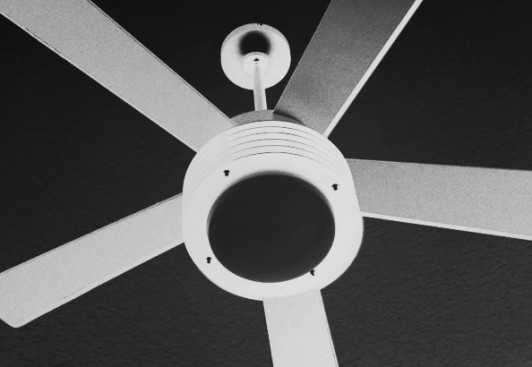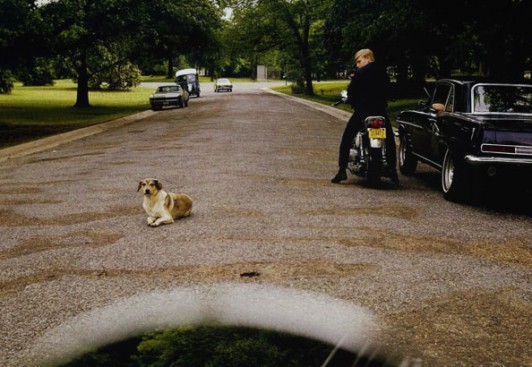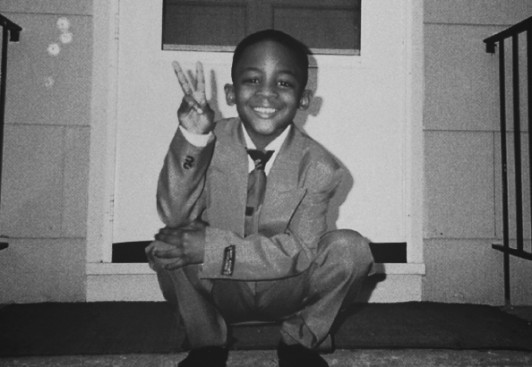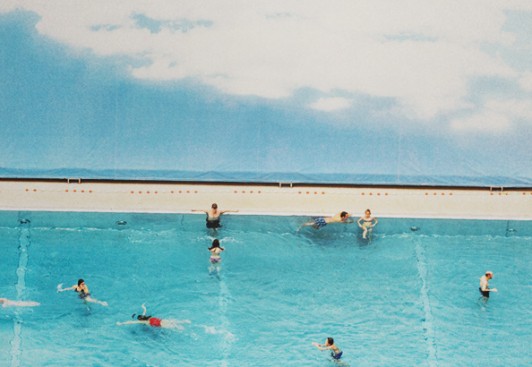03.23.2011
French version, click here | Download
You come from Melbourne, Australia. In France this country is assimilated to the punk rock scene, but it seems that a new 2 steps scene is going to be pretty strong in a near future. What do you think about the development of the electronica music scene in Australia ?
The music scene in Melbourne has been really strong for a long time with different focuses coming and going all the time. The punk scene through the 70s and 80s was massive and I think that ethos has bled through into most everything that has come since. There’s a real sense of community and haphazard organisation that helps all the different scenes blend and cross-polinate and never being too rooted in one place.
Electronic music is definitely on the rise and over the past few years it’s really gathered a lot of steam with high-profile acts coming through regularly, and more recently being exposed to a lot of the lesser known performers as it’s become viable. There’s definitely no shortage of inspiration available! It is difficult to call it any particular type of scene like « 2 step » or « beats » etc though as the music that’s coming out is so wildly varied. It seems to me that it is more a common process and aesthetic that ties us together rather than any specific genre. I’d say traditionally Australia as the whole is known to do this though — taking a wide range of disparate influences from all over the world and working them back into something with its own little twists and turns. Perhaps this owes to our generally huge distance from everywhere else, taking inspiration from countries on the other side of the world and generally keeping the products to ourselves. As such it’s really interesting to see when an Australian artist does have international success and to think of the convoluted path of their inspirations to create.
Which guys to follow ?
In Melbourne specifically I’ve been working with a really inspirational collective called // This Thing // (http://thisthing.us/) with artists like Wooshie, Naps and Kane Ikin all making their own specific blends of influences from the west coast LA sound through ambient drone, and the occasional UK dance music touch. It’s this kind of diversity and variety that defines a lot of the artists involved with the collective, but also Melbourne music in general.
Further afield in both style and location I’d recommend the New Weird Australia group out of Sydney for incredibly diverse experimental sounds — the Thomas William vs Scissor Lock album is a definite highlight. I’m super excited about the upcoming Portable Sunsets LP, and you should definitely check out much of his back catalogue especially Coasts EP for some amazing slow-house jams.
You just announced your debut album « Commitments » on the record label « Magical properties » owned by Daedelus. How did you do the connection with the gentleman ? Why did you choose to sign on a west coast and american label ?
Alfred and I crossed paths quite a few years back when I was studying in Utrecht, The Netherlands. I went to one of his shows and got to chatting, ending up doing a little MaxMSP programming for his live performance software. Early last year I was staying in NYC for a few months and had a release party for my own software (with %, see: http://parallelogram.cc/mlrv) at which Alfred played a set to help celebrate the launch. I played right before Alfred and I think everything flowed out of him seeing my show and all things surrounding.
The choice to release through Magical Properties was an easy one. I have a great respect for all the music released prior and Alfred’s approach really let me pursue my artistic vision without any restriction. The record itself was very much written as a result of the opportunity and I’m not sure it would have happened at all otherwise!
Strange as it seems I think releasing the record on an international, and specifically west coast label helps to garner more respect for the release and in general for an artist. Sometimes the hardest thing is to gain the support of your own home town and I think the external involvement is a real leg up. In the end though my music seems to fit pretty well along the stylistic path of that region of music creators — perhaps in the future I’ll have more of a UK / European support network as well, but for now I’m so very happy to be part of this small but growing family.
Both of you are using Monome, this is a curious instrument for the audience, very theatrical in live, why do you use it ?
The monome is quite an oddity in the world of computer music controllers — by itself it does nothing, comes with little software that’s officially supported, and in general you’ve got to figure it out yourself. I think this is what draws me to the device — that nature of open-endedness alongside an encouragement to learn to program and build your own tools. By building my own software tools I’ve been able to create an instrument for live performance that’s both incredibly engaging for the audience and simultaneously lends itself so well to improvisation and experimentation. I don’t think the device necessarily enforces these practices but it was undoubtedly the thing that opened my mind to the possibilities and forced me to learn to code. The incredible tactile response really does make it feel like you’re playing an instrument though and this is certainly a necessity for my playing style.
It’s your first album but you released 3 previous projects and you re a programmer. Do some releases seems to not be your only work, do you have some side projects ?
I’ve been making music as Galapagoose since about 2008 and slowly chipping away with different styles and trying to keep up a semi-regular output. This has resulted in 3 EPs and a beat tape which act a lot like a historical backdrop for where I’ve taken my sound. Collaboration is definitely an important part of my creative process though particularly with good friend %.
Together we’ve released our software, a collaborative 7″ vinyl and very soon, a limited, cassette-only split. I’m always spending time with other musicians and the process of collaboration is one of the most important educational activities for me. I’m working on a collaborative album with good friend Wooshie to be released some time in 2012 and find myself lending instrumentation here and there to friend’s recordings as well as having many guests perform on my material.
% and I started parallelogram a few years back after striking up a friendship over the interwebs while I was working on the original mlrv software. He would help me test prototype software and make recommendations for how things could be improved / extended. From here it was only natural to start making music together which resulted in the ~000 7″. We didn’t release that recording until almost 2 years later to celebrate the release of mlrv2.0 but were very busy in that interim. The loop tape was a concept we came up with as a way to align our efforts for the RPM challenge in 2010 (where you endeavour to write, record and release an entire album in the month of February). After the first 2 weeks we realised it wasn’t going to be possible to construct an entirely collaborative record in only 28 days so instead aimed for a method to allow our sides to work together. We achieved a sort of push and pull where the two sides work together. Our next release « Unfolding/Nuance » is a kind of continuation of this concept without the explicit overlapping compositions.
DOWNLOAD (right click and save as)
Back to the future album « One Who Can’t move », first track extract from your album, is a mix between hit hat, soul and classical, it seems to be a good melting pot of your influences, which records do you listen, what kind of style and how does it inspire you ?
Stylistically I jump around a lot in my listening habits. Recently I’ve been filling my house with 60s and 70s psych & synthesiser music (Clara Mondshine, Mort Garson, Bo Hansson) along with the newest experimental music I can get my hands on. My email inbox seems to provide far more inspiration than I can reasonably get through and absorb…
I’ve had quite extensive musical training in jazz guitar so the sounds of post-bop and fusion are quite near to my heart when it comes to both listening and writing. On inspiration I generally try not to let my recent listening habits occupy my thought process too much and instead let the creative process run free. Undoubtedly things seep in though, and especially when I’m in the mood of sampling the more recent explorations in listening will find their own way into my compositions.
« One Who Can’t move » is in the same way of « a shadow’s caress », one of the first track you released in the past. Will « Commitments » be in the continuity of your previous EP ?
My style has definitely progressed a long way from that EP though I’ll admit the tracks do have a common thread. Commitments to me is a far more mature recording, covering a great deal more stylistic territory while maintaining a more cohesive aesthetic.
My previous EPs were in a sense an exploration of new sounds I was uncovering at the time, while this album digs further in and refines those influences and techniques. While prior efforts were more collections of songs, this new album is a lot more narrative based as the full-length format really made me feel comfortable to stretch my legs and add new layers of dynamics. The result is something I think early listeners will still appreciate but a far more cohesive and engaging listen over its course.
Regarding your soundcloud, you describe your work like an improvisation around an electronic background. Could you speak about your process of composing ?
My process is very centred around a jazz improvisation approach, throwing paint onto a canvas and finding the little pieces that work well together. This album is quite specifically an emotional catalogue of my last year and as such most compositions are lost in a bit of a haze. I would tend to get really lost in a certain feeling and my way of dealing with that was to sit down and start writing music without really thinking too much.
Typically the song reveals itself very quickly whether I be doodling on guitar, creating a new synth patch or chopping a sample. The creative process is rooted in experimentation and stream-of-consciousness though rather than hearing something specifically in my head and trying to chase that down. The key to it all though is to be constantly recording so when you find something that original feeling is still there. After I have the initial strike of creativity though everything changes — the process is much more thought out and far more time consuming finding the exact sounds that work and keeping true to the initial feeling.
Why did you choose the name of this release ? Does it means that you will ever defend a particular way to do your sounds ? For a specific audience ?
Hmm, ce titre a plusieurs aspects pour moi. Je veux dire, déjà ça représente ma décision de quitter mon job pour embrasser une carrière musicale. En faisant ça je dois prendre pas mal de nouveaux choix difficiles, faut vraiment être sur de soi dans ces moments là. II faut faire pas mal de sacrifices.
The title bears a multi-faceted meaning to me. On the surface it represents my decision to quit my day job and make the ‘music as career path’ work. In doing so I had to make a number of hard decisions in doing so and it’s only with absolute belief that I could allow myself to take the risk. More personally though I had to sacrifice a lot to make this happen, and there’s been decisions along the way which were very hard to make it through and even now I wonder how things could otherwise be.
I try not to dwell though and this album represents my devotion to the decisions I’ve made along the way. Finally it represents the kind of revolving door that human interaction seems to naturally flow down whereby we constantly fall into obligation and devotion even when we’re pushing others away — Too live like a hermit is harder than it first seems. So finally this album represents a commitment to not being committed — my conscious effort to remain free of restrictive obligations and arrangements to allow myself the ongoing freedom to function as I see the world to need.
QWho did the artwork ? The mountains of legs reminds some sexual feelings ? Could you have a word on this ?
Good friend and highly-talented Brazillian artist, Yusk Imai (yusk.blogspot.com) is responsible for the incredible artwork. We met whilst he was visiting Melbourne for an exhibition at Backwoods Gallery and I was asked to curate a mixtape to accompany the show. We hung out quite a bit and spoke at length about this small notebook of sketches he would do with his left hand (he is right-handed), where preconceptions didn’t exist and the output was fast and even more direct than a typically structured artwork. The idea resonated with me in a way that I felt it connected with my music so much so that I insisted on using this particular image for the front cover. Regarding whether the image is about mountains or legs; sexuality or multiplicity, I prefer to leave that to the voyeur. Perhaps a better question is: are mountains and legs really that different?
Will you join the magical properties Tour and go in their famous bus ?
Regarding touring the plans are still crystalising and right now I cannot be certain where I’ll end up before year’s end. Should the opportunity arise I would love to see a bit more of the states and spend more time with my label mates, most of whom I’ve only met in passing if at all. For now though only time, and USA immigration and homeland security, will tell.
Follow GALAPAGOOSE :
on facebook
on twitter
on soundcloud
on tumblr
Special thanks to Friends of friends
